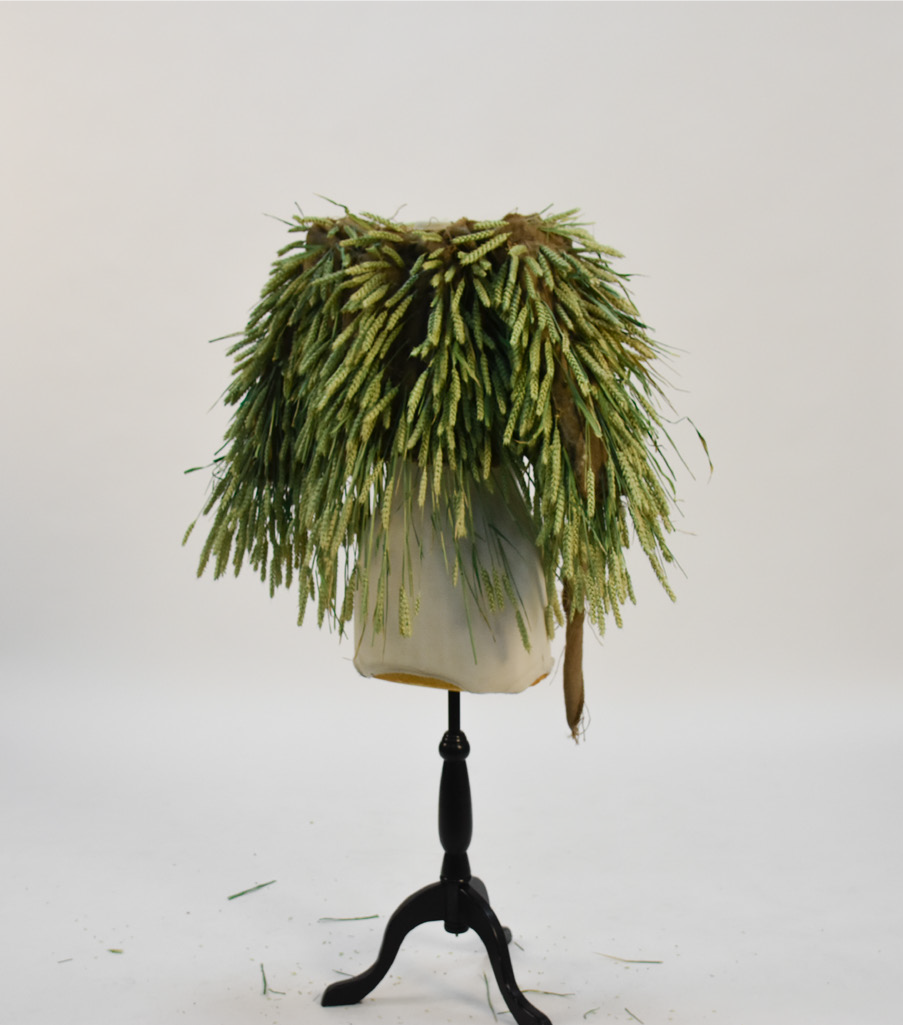
Speculating on the future with Next Nature Network
What can we learn from the future visions of the past? Next Nature Network invited BA students from Studio Urgencies to respond to its Retro Future exhibition – "the world's first major expo about yesterday's future" – which runs in Eindhoven until September 2023.
With members in 44 countries, Next Nature Network is a group of makers, thinkers, educators and supporters interested in debating a future in which biology and technology are fusing. It is based in the Evoluon Spaceship building in Eindhoven, where the Retro Future exhibition is staged.
The exhibition looks at visions from the past, connecting what might have seemed like the products of wild thinking to real-life innovations. Examples include Da Vinci's flying machines and a Space Age Jetpack. It also includes a section on future predictions by contemporary designers, makers and thinkers, including works by Studio Drift, Maison de Faux & Esmay Wagemans, Driessens & Verstappen, Audrey Large, Tabita Rezaire, Michael Mandiberg and Studio Smack.
In September 2022, Next Nature Network commissioned a group of students to explore the idea of a "future scenario" as one of their exam projects. They asked students to consider the question: "How did people used to speculate about the future, what can we learn from that, and what happens when we project further into the future from there?"
"Future thinkers, artists, designers, scientists, architects and thinkers make tangible what others do not yet see," explained Next Nature Network. "Changes and innovation are set in motion by people who believe that the world can be not only different but better."
Projects

North Sea Orchestra by Annelie Dalglish
The North Sea is broken. The United Nations Convention on the Law of the Sea (UNCLOS) divided the North Sea into seven maritime zones, allowing seven coastal states to territorialise their waters with rules and regulations. As a result, environmental protection can be the priority of one zone, while its neighbouring zone is being overfished.
However, the seven zones of the North Sea are similar to a musical orchestra: the different elements need to be in tune with each other. To encourage policy-makers to listen to the North Sea, to see it as one living entity and to work together with other coastal zones, my project proposes the creation of seven musical instruments inspired by the shapes of the individual maritime zones. For graduation, I will create an aeolian harp based on the shape of the maritime zone of the Netherlands, to be played by the wind coming from the North Sea.

All watched over by cookie monsters of loving grace: or how I learnt to become a digital disaster by Yufei Gao
In the data-driven present (and most likely the future, too), human existences and behaviours are the seemingly endless resources for algorithms to mine, thus the term "data-mining."
In the sense of natural resources, (digital) technology is NOT our next nature. WE ARE technology's next nature, or we already are.
To resist surveillance capitalism, resist objectification and violation of privacy, we, the next nature, should learn from the collapsing over-mined mountains, floods and droughts, from coronavirus and the melting icebergs. To become noise, to be irrelevant, to be ignored, and to be deleted.

Arable Bodies by Romina Rems
Arable Bodies is a futuristic project answering a renewed call that first appeared in the 20th century: how to feed people 60 years from now when, according to the UN, the population will have exploded, while the arable land will have become even rarer than today?
Faced with a shortage of food and arable land, a skilled farmer will be forced to let the land rest and instead rent other surfaces to grow grains on - such as people’s bodies. The farmer will provide his contractors with grain garments, and the employees will agree to bring the garment to harvest in accordance with the farmer’s instructions.
The project is visually represented by: -> a wheat coat/garment contracted to the employees (the coat will be lit in purple light, like in vertical gardening greenhouses) -> a farmer’s manual; -> a film demonstrating the farming process (for instance, employees gathering at a raining spot)

The Warp of Symbiogenesis by Paul Shaffer
When beings interact for a long time, it is referred to as symbiosis. Lynn Margulis coined the term symbiogenesis to describe the evolutionary power of symbiosis. We have warped that process of evolution through human, i.e. technological, intervention.
The Warp of Symbiogenesis is a weaving collection that translates five stories of invisible interactions around us into textiles. For each type of symbiosis, a different binding is used to symbolise the way species interact with each other. The collection is made from wool and linen sourced in Europe and brings attention to the intimate entanglements we have with beings around us, and they have to each other.
Forward to the past (= FTTP) by Anabelle Grundmann
FTTP questions our ability to become sustainable of our own accord. By imagining travelling positively increases the tourist's social standing, it criticises today's benefit-oriented society.
Mass tourism harms our human-made and natural environment, threatening the future of tourism. This demands a shift to positive impact tourism (=impactism), considering culture, society, environment, and economy. Behaviour (e.g. tourism) is guided by personal and interpersonal needs (=prestige). Gaining prestige from travelling positivily therefore motivates the behavioural shift to impactism.
Placed on the future floor (NNN exhibition), FTTP illustrates the ‘impactism’-society through a retrospective museum exhibition, introducing the travel platform ‘coun+’ (impactism-score-system) and showing artefacts of that time, offering the viewer to go forward to the past.
Credits
Next Nature Networks: Arida Bandringa, education expert Mieke Gerritzen, creative lead Rolinka Kattouw, head Next Nature Academy & Lab
DAE: Tessa blokand, relation manager educational projects
Studio Urgencies: Irene Droogleever Fortuyn, studio leader Miki Dai, studio coordinator Jan Melis, guiding tutor Tessa Blokland, relation manager
Students: Annelie Dalglish
Yufei Gao Anabelle Grundmann Romina Rems Paul Schaffer